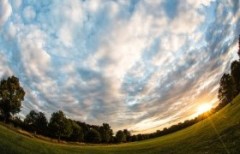I was looking for my childhood home on Google Earth, caught a glimpse of it from 30,000 feet, then zoomed in and saw my mother’s herb garden at the bottom of the lawn.
My Mom and Dad are gone now, and I saw cars I didn’t recognize in the driveway.
I knew the image was created in late fall or early winter because part of the lawn was brown: my father planted Zoisa grass in the early 1960s when he was waging war against crabgrass and dandelions, and Zoisa turns brown in the cold. I also saw the leafless willow tree given to my parents when my sister died in 2001, more evidence of a cold month.
I saw no Jack Russell terriers leaping after tennis balls that my Dad would smack with a wiffle bat. It was a still image, a soundless moment, at a house I knew well. It reminded me that film-makers use wide angles and close-ups to tell their stories. Tweet: Wide angles create the setting, and close-ups bring us face to face with uncertain human realities. http://ctt.ec/A2Wc5+
Abraham Lincoln did this in the Gettysburg Address. With his first sentence, he invites us to gaze at the continent and 90 years of history.
“Four score and seven years ago,” he begins, “Our fathers brought forth on this continent a new nation….”
In one majestic sentence he summarizes national history and the view from the heavens. And then comes the close up. “Now we are engaged in a great Civil War…” With that sentence he locates his audience in time.
“We are met on a great battlefield of that war.” Now he locates us in space, in Gettysburg, PA.
The President goes on to say that the deeds of the dead cannot be honored by the words of the living, and that we can best honor the fallen with a renewed commitment to the principles of representative democracy.
Like me looking for my childhood home on Google Earth, Lincoln first fixed his listeners’ eyes on the big picture—the wide angle, the arc of history, and the curve of the earth.
And then he brought to their attention the current conflict, and the bloody field where the bodies lay—zooming in on the problem, and on what needed to be done.
This is a powerful model for presentations. Start with the big picture, the setting in which the story takes place. Then zoom in on the problem that clamors for a solution, and offer an actionable and evidence-based answer.
But equally powerful can be the reverse: moving from the close-up to the bigger picture. Locating a vivid and telling detail at the start of your talk can focus the mind of an audience before you zoom out to provide context and meaning.
For instance, my wife, Sharon Dennis Wyeth, an author of many childrens’ books, often begins her talks with the image of her coming home from school with a piece of paper in her hand, on which she had written B-E-A-U-T-I-F-U-L, the first word she ever wrote. She gives it to her mother, and her mother puts it on the refrigerator. And then Sharon zooms out, to speak about the importance of nurturing young readers.
I zoomed out from my childhood home so I could see the wide woods surrounding the house–the woods where I played with my friends.
Still there, now owned by the Nature Conservancy, I saw the canopy of bare branches that shadowed the ruins of our forts made of sticks and leaves, where we fought battles with each other, and went home for supper when it got dark and our mothers called us home.
From a distance of 50 years, I can say I was a very lucky boy.
